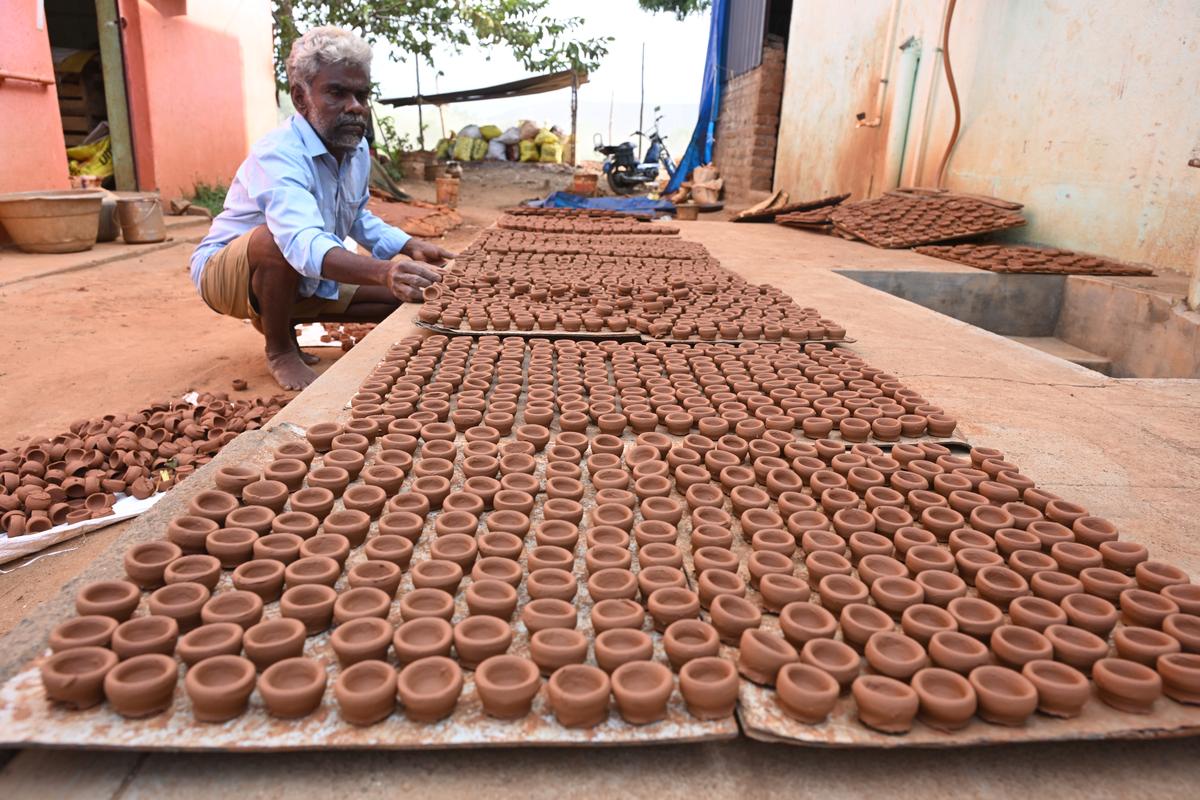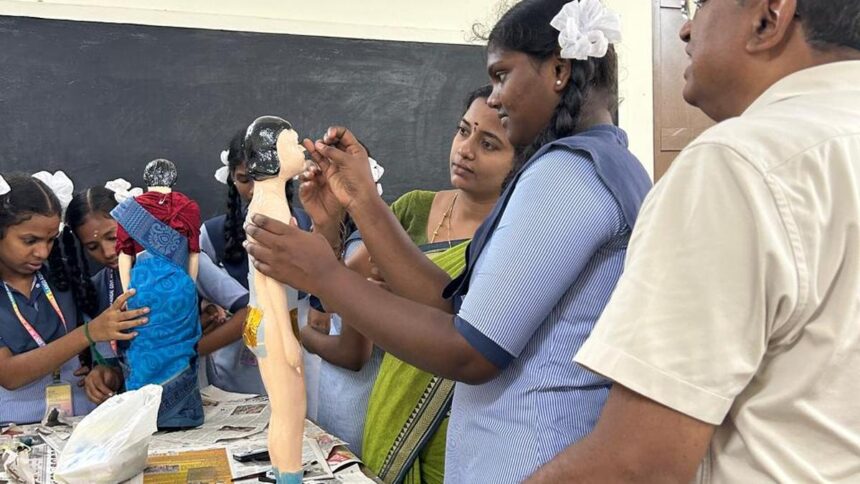Usha Nandhini, 36, from Bodinayakanur, had always loved watching carpenters at their work. After some time, she started dabbling with wastewood but found no place to hone her skills. Ten years ago, she underwent a training programme of the Khadi and Village Industries Commission (KVIC) at Gullapuram in Theni district. For over twenty days, Ms. Usha immersed herself in the intricacies of working with waste wood.
With free tools provided by KVIC, Usha emerged from the training with a newfound confidence. She and her husband, Kannan, are now creating a variety of designs.
When asked about her future plans, she explained that they are currently making handicrafts. With the help of loan benefits from KVIC, she intends to buy a machine for producing wooden products. This investment would reduce production time and increase sales.
KVIC has changed the lives of many entrepreneurs by providing training in a wide range of sectors such as food processing, beekeeping, pottery, carpentry, and crafts made from natural fibres. By making use of local skills and resources, KVIC is supporting artisans and small business owners.
A 34-year-old budding young entrepreneur, C. Ambeth Raja, from Cumbum in Theni district, received training in beekeeping and honey production under the KVIC. He is now running a honey business and also markets his products under his own brand.
Ambeth Raja is showing his beekeeping works in a garden at Cumbum in Theni District.
| Photo Credit:
G. KARTHIKEYAN
Currently, he provides employment opportunities for eight people. Additionally, he conducts seminars for school and college students on beekeeping.
KVIC’s training has given him confidence, and now he identifies suitable gardens and places beekeeping boxes there, and after a few days, he purchases honey from the garden owners.
After five years in this business, he has now gone into value-added products and produces wax creams and honey-based cosmetics.
He says, “After completing our training in KVIC, we were provided with a limited amount of equipment by KVIC. From my own experience, I found it to be insufficient for beginners. So to boost the confidence of beginners, we also supply additional items, such as feeders, plastic wax combs, bee veils, smokers, gloves, and more.”
KVIC’s training programme is creating ripples in many corners of the region. Palanisamy, a 52-year-old artisan from Paravai, Madurai, seeing his family and relatives making clay lamps, decided to join the training programme. He left his job at a medical shop and, since 2008, he, along with his wife, has been creating clay lamps and small clay products.

Palaniswamy is making clay lamps at Paravai, Madurai.
| Photo Credit:
G. MOORTHY
It was a training programme on making incense sticks (agarbatti) that kick-started the entrepreneurial journey for Kasithavam, a 49-year-old man from Thiruppalai, Madurai. This, along with a six-month herbal medicine course that he did at Madurai Kamarajar University, led him to produce organic agarbatis, which are made using natural materials such as cow dung. For about 15 years, he has been in this business.
Kasithavam making organic incense sticks and incense, which are made using natural materials at Thiruppalai, Madurai.
| Photo Credit:
R. ASHOK
These are all success stories for KVIC, and Director of Madurai division Senthil Kumar Ramasamy says that this has been possible because of the good network they have of 26 registered institutions, known as Sarvodaya Sangams or Bhavans, spread across about 13 districts around Madurai. These institutions function as support systems for many artisans.
He points out that the Gramadyog Vikas Yojana offers a range of benefits for individuals trained in village industries. Participants from the SC/ST community are required to pay only 10% of the actual cost of tools and equipment, while individuals from other communities must pay 20% of the total cost. Additionally, tools are provided free of charge to those classified as below the poverty line (BPL).
Beneficiaries will also have access to the Inter Subsidy Scheme, which allows them to repay loans at just 4% of the bank’s interest rate. The remaining amount will be covered by KVIC using funds received from the central government, he added.
But beneficiaries do face some teething problems. While asking about the challenges faced as a budding entrepreneur, Ms. Usha says, “Since we are handcrafting all of our wooden products, we have to sell them at a slightly higher price. We are looking to switch to machinery so that we can increase our production and market our items at lower prices. For this, we hope that the KVIC will help us by giving loans in the near future.”
Mr. Ambeth Raja points out that, though there are many loan opportunities provided by KVIC to help grow businesses, getting a loan from banks is difficult. “I have been unable to obtain a loan from the bank, even with the certificates and permission letter issued by KVIC. I have faced multiple rejections because banks are willing to provide loans only to groups, not to individuals. If individuals like me can’t access these loans, how can we expect to grow?”, he wonders.
When asked about loan opportunities, Mr. Senthil Kumar states, “It depends on the person’s credit history and the presence of Non-Performing Assets, as well as the demand for the product and the business in that specific area.” But he also adds that bankers should come forward to assist these individuals.
Marketing of their products is another issue that many face. Mr. Kasithavam suggested that the KVIC should equally prioritise marketing efforts alongside its existing training programs. This dual focus would enhance the visibility of KVIC’s initiatives and attract a broader audience.
On the difficulties faced in rolling out awareness programs, Mr. Senthil Kumar expressed his concerns, stating, “As advertisements in newspapers do not reach remote areas, we are utilising radio broadcasts and advertising on mini buses that travel through these areas.”
“As for marketing, along with organising stalls in each district to showcase the products of the artisans, all artisans have permission, along with a certificate of registration, to sell their products at any of the 26 institutions. This not only allows them to earn a profit but helps them make connections with higher officials, which can lead to beneficial opportunities for larger projects in the future.”
When asked how far the beneficiaries are repaying their loans, a KVIC official said that about 90% of the loans have been repaid. This only vouches for the fact that KVIC training programmes have been a success.






















